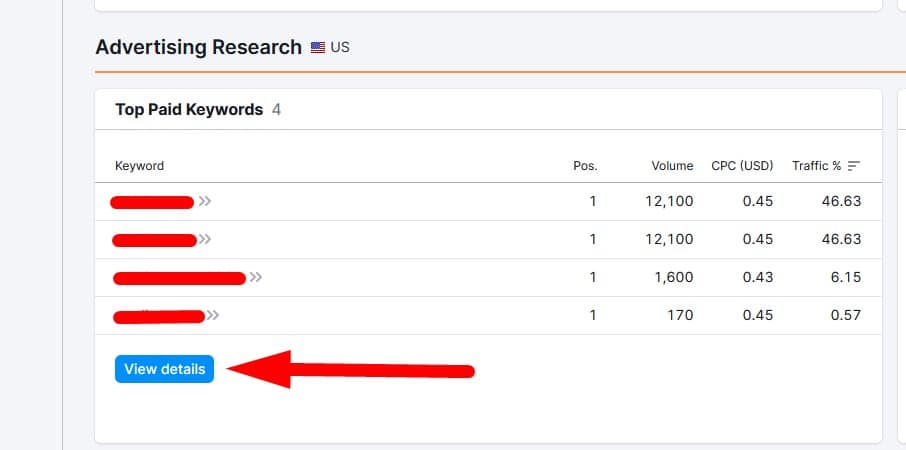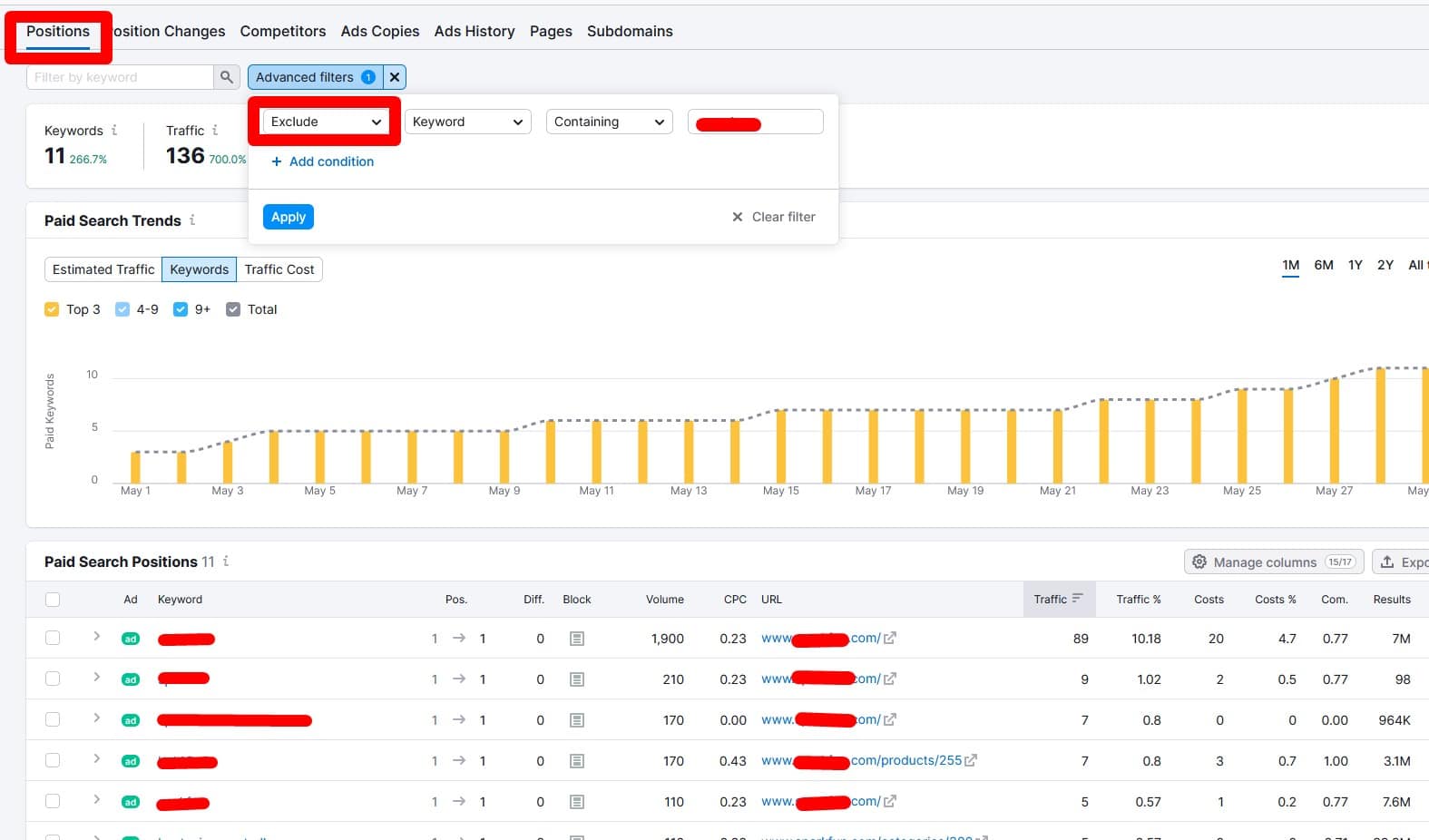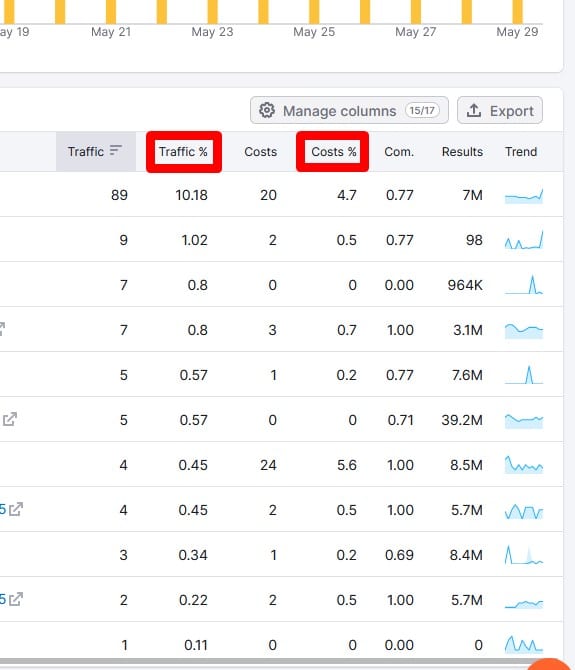Starting an E-commerce Business
Skill-sets you need:
- Technical: CMS (WooCommerce, Shopify, or Magento)
- Marketing: SEO, CRO, PPC, and Email
- Product Marketing: Manufacturing, Dropshipping, Research
E-commerce is a broad term, and if you follow a proper decision-making methodology, you can generate solid and consistent revenue by making a difference.
1. Choosing Your Niche
Before choosing a niche, consider that this will occupy a significant part of your daily life. The niche should not only have current or upcoming demand but should also be something you are knowledgeable and interested in. Consistency is crucial in the long run as ecommerce requires dynamic involvement, such as updating pricing to stay competitive and creating alternatives based on current trends.
One of the best ways to define existing demand is to use keyword data. Finding out the search volume and cost per click will help you identify where the money is. I do not recommend relying on social media trends when deciding on your e-commerce niche. Social media trends can be impulsive and often lack long-term impact. Keyword research, on the other hand, will help you identify if a trend on social media created a corresponding interest.
2. Conduct Your Market Research
Unless you have an innovative product that has never been sold before, you will have competitors before you start your ecommerce store. Identify the list of competitors and investigate their market posture. Most of the data you need is out there, and all you need is to identify the data sets required to make educated decisions.
Analyze existing demand feeds your competition: Using tools like SEMRush, you can identify the landing pages your competition receives traffic to. This data will also come with the keywords, keyword volumes, and CPC (cost per click). As a result, you will have an idea of what’s currently in demand, how much it would cost to drive traffic for those searches to your product pages, and how your competition allocates their budget per product they sell.
Here is how you do it using SEMRush:
1-) Enter and submit the main domain of your competitor.
2-) Under “Advertising Research,” click “View details”.

3-) For this use case, you may want to exclude the brand keywords your competition is paying for.

4-) Here, you can identify the cost allocation per keyword and target landing pages of your competitor.

Social Listening: Identifying where current buyers are unhappy or expect improvements can get you ahead of the game. Tools like Infegy or Hootsuite may help you gather this data.
Reviews: Read the reviews on your competitors’ websites and external review sites to get an idea of how users feel about this niche. Some useful external review resources you can use are Consumer Reports, g2, CNET, and Reddit. Compile these reviews into a sheet and input them into AI with the following prompt:
Here are the reviews about [product/niche]. Here are the specs of the [paste product specs]. How can I improve my product to create and maintain demand?
Simultaneously, you can also use AI to create a value proposition that will check these boxes (make sure to fact-check the output against your product specs on your website. You do not want to promise something you don’t offer):
Here are the reviews about [product/niche]. Give me a value proposition that I can use on my website that will minimize the potential buyers’ concerns and maximize the excitement about the best parts of this product.
Understanding your competitors and target audience is essential for success. Analyze competitor websites, their product offerings, pricing, and customer reviews. Use tools like Google Trends and social media insights to understand your audience’s preferences and pain points. This research will help you tailor your offerings and marketing strategies effectively.
3. Creating Your Business Plan
Although any business requires a quantitative approach, e-commerce probably needs it the most. Your whole business is built on numbers (marketing metrics, financials, profit margins, lifetime values, etc.).
Imagine you are getting in your car and want to go to a restaurant with a specific cuisine. Roaming around with your car will take time, not to mention the gas you have to use. Researching the cuisine online in your zip code and inputting the address into your GPS will get you there faster and at a lower cost. Business plans are the addresses you input into your navigation, with the only difference being you will have multiple stops. Know where to drive your business first, second, third, and so on.
What are your immediate, mid-term, and long-term goals? What can you do now, and how long will you give yourself to complete each of these goals? Once you set these terms broadly, continue specifying the P.P.T. (People, Process, Technology) you need for each goal.
- What tools do you need?
- What areas in e-commerce can you take full accountability for, and what areas do you need to hire talents for?
- How much do all these cost?
- When do you expect results?
4. Selecting Your Business Name and Domain
If your e-commerce business focuses specifically on a single product, it’s best to keep your product and domain name the same. You have one shot. Remember that changing the domain/brand name down the road has financial, SEO, branding, and more consequences even for large enterprises (trust me, I have seen the worst firsthand).
5. Registering Your Business
Especially when selling products in the US or Europe, you must be compliant for both legal and SEO reasons. I use LegalZoom to register my businesses. You may need an attorney depending on the complexity of the business model or product(s) you are selling.
6. Setting Up Your Online Store
I am quite opinionated about this topic, and I know a good number of people will strongly disagree with me. Ready? Here it goes: In my experience, WooCommerce works better than Shopify.
Now, don’t get me wrong, I am not saying that you won’t be successful using Shopify. On the contrary, it’s a great platform. As a person with over a decade of experience in conversion rate optimization, shopping personalization, and SEO, and after testing both platforms over 10 times, I believe the open-source platform WooCommerce is much more flexible (and free). With WooCommerce, you also get more control over SEO.
7. Product Sourcing
In e-commerce, you can source your products by:
- Manufacturing yourself (I don’t recommend this for beginners)
- Dropshipping
- Partners / Affiliates
You don’t have to pick one; you can do it all if that’s your thing. Each of these sources has advantages and challenges.
Manufacturing:
- Pros: Since you manufacture it yourself, you will likely have a much higher profit margin than the other sourced products. You also get to innovate, upsell, and cross-sell by manufacturing more products.
- Cons: Costly. If what you manufacture doesn’t get the demand you expect, you bear 100% of the cost.
Dropshipping:
- Pros: You don’t even have to touch the product, let alone deal with shipping, handling, returns, or refunds. Make sure to get an attorney to craft your return/refund policy. Regardless of who handles the shipping and handling, your buyers buy from you, and this comes with liabilities. With drop shipping, you also have no limit on the type or number of products you can showcase in your store.
- Cons: Most dropshipped products come from Asia. Shipment can take several weeks. Consider the frustration in the era where we have our packages within a day (Target, Amazon, etc.). The estimated arrival dates are big friction points for buyers unless the products you sell are exceptionally cheaper or unique.
Affiliates:
- Pros: Less or no liability compared to other sourced products. With the affiliate method, you simply send the traffic to the seller, and if sales happen (depending on the timeframe the seller discloses in the agreement with you), you get a commission from sales.
- Cons: Affiliate marketing has become more challenging due to recent Google algorithm updates. Search engines now prioritize review content written by an expert, reviewed by an editor, evidence for reviews, and more. Take a look at Google’s reviews documentation. With thousands of products in your store, this may be challenging.
Partnership:
- Pros: Partnership comes with a more focused relationship between the vendor and you. They will assist you with marketing materials and other resources. In general, you will get higher returns per sale with a partnership.
- Cons: It is not easy to find a decent partner unless you have a strong voice on social media or SEO.
8. Managing Your Inventory
There are several software options that can help you manage your inventory. Unless you are starting big (thousands of products), I recommend starting with a simple Excel product master sheet file. Managing inventory becomes a necessity when your e-commerce website starts receiving traffic and making sales.
For dropshipping, you can use the WooCommerce Dropshipping plugin to import, manage, and categorize your products from suppliers. If you manufacture your product, the default WooCommerce module called “products” will do the work. If you have multiple suppliers and hundreds of products, you may want to buy inventory management software.
9. Setting Up Your Payment and Shipping
For payment and shipping, you need:
- A payment gateway: Stripe, Paypal, Google Pay, Amazon Pay
- Shipping partners: FedEx, UPS, DHL, etc.
Integrating these into your WooCommerce store requires little or no coding skills.
10. Marketing Your Store
- Account Creation: Check all the boxes first by creating your accounts:
- Social Media: Twitter, LinkedIn, Instagram, Pinterest, YouTube, TikTok (if applicable)
- Analytics: Google Analytics, Google Search Console (GSC), Bing Search Console
- Basic Optimization:
- Utility Pages: Ensure that your utility pages (about, contact, main page, legal pages) are properly written. This will help search engines understand and recognize your store at the business level.
- Blog: Identify the topics by conducting keyword research. Make sure that your blog articles focus heavily on unique, informative content rather than promotional.
- Product pages: Avoid simply copying descriptions from other websites. Rewrite and then improve descriptions for each product. You can get assistance from AI but make sure you never generate the content with it. To learn the conscious use of AI when producing content, take a look at How to Use AI to Improve Your Content.
- Email Marketing: Before you start email marketing, you will need methods to consistently capture emails so that you can build your list to start promoting your products. Especially when you are new in the market, you need to offer some incentives to your visitors so they can exchange their email addresses with you and subscribe. A “Subscribe to receive X% off on your first purchase” pop-up can be a good place to start. Klaviyo is what I used for my projects, but many other tools are available for free or at a lower cost.
- Launching Your Store Finalize your website on a staging environment so that you have time to check mobile friendliness, link health, site speeds, etc. As soon as you launch it, announce it on all social media channels.
- Start learning about innovative tools such as AI chatbots (I use ChatSimple), where you can train it by simply submitting your web page URLs. Get comfortable with Shopping Personalization plugins.
Conclusion
I tried my best to guide you in getting started with an e-commerce business. Of course, there is a lot more to cover as your store matures. Remember, of all the things I listed above, it all comes down to two principles:
- Have your business goals documented.
- Big or small, don’t let a day go by without making progress.
See Also
0 Comments